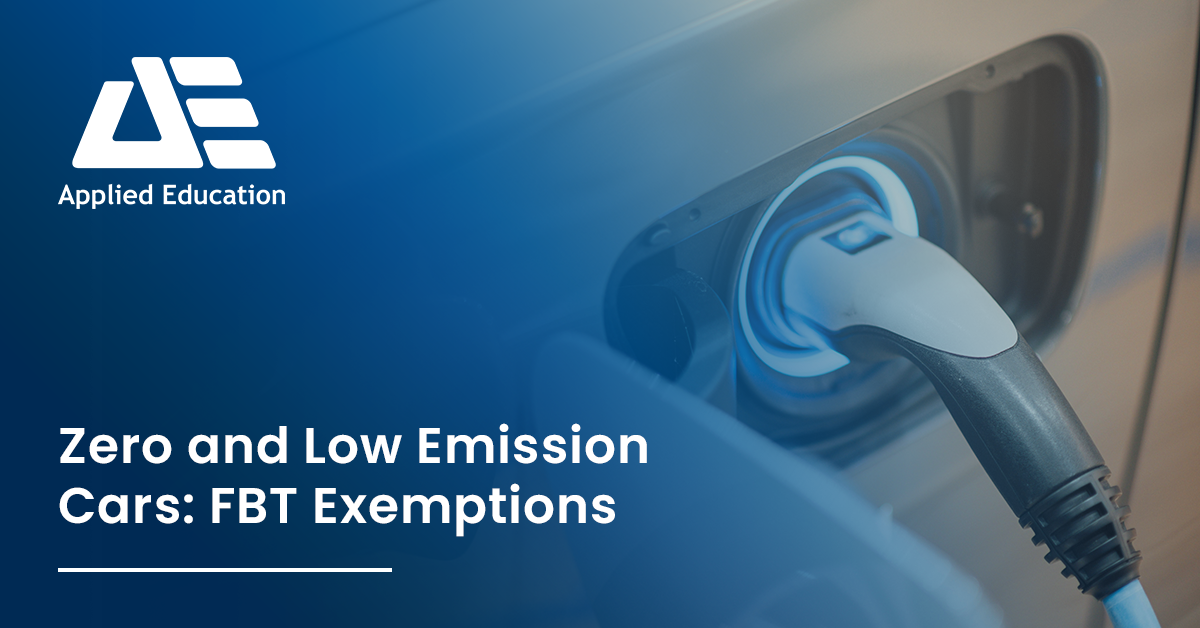
Published: November 2024
Understanding Zero and Low Emissions Vehicles: A Guide to Fringe Benefits and Tax Exemptions
In recent years, zero and low emissions vehicles (ZLEVs) have emerged as a key component in the global transition to more sustainable transportation. Not only are these vehicles better for the environment, but they also come with a range of benefits for both individuals and businesses, particularly when it comes to fringe benefits tax (FBT) exemptions. This post will break down the key elements of ZLEVs, including eligibility criteria, tax advantages, and how they can affect employees and employers alike.
Table of Contents
What Qualifies as a Zero or Low Emissions Vehicle?
To qualify as a zero or low emissions vehicle under the FBT system, a car must meet two main criteria:
Vehicle Type
The vehicle must be one of the following:
- Battery Electric Vehicle (BEV): Powered solely by electricity stored in batteries.
- Hydrogen Fuel Cell Electric Vehicle (FCEV): Powered by hydrogen converted into electricity.
- Plug-In Hybrid Electric Vehicle (PHEV): A hybrid vehicle that can be recharged via an external power source. (Note: This does not include standard hybrids that only run on liquid fuel.)
Design Specifications
The vehicle must be designed to carry fewer than 9 passengers (including the driver) and have a load capacity of less than 1 tonne.
Important Note: Motorcycles, scooters, and vehicles that don’t meet these specifications—regardless of whether they are electric—do not qualify for the FBT exemption.
FBT Exemption Criteria
The fringe benefits tax exemption applies to vehicles that meet the zero or low emissions criteria under specific conditions. These include:
- The first use of the car must be on or after 1 July 2022.
- The car must be used by an employee or their associate, such as a family member.
- The luxury car tax (LCT) must never have been payable on the importation or sale of the car.
If these conditions are met, benefits like salary packaging for an electric vehicle (EV) can be exempt from FBT, allowing employees to access these vehicles without the additional tax burden.
What Happens to Plug-In Hybrids After 2025?
From 1 April 2025, the exemption will no longer apply to plug-in hybrid electric vehicles (PHEVs). This is a significant shift, as the Australian Tax Office (ATO) will no longer classify PHEVs as zero or low emissions vehicles for FBT purposes.
However, there’s a crucial exception: If an employee has already been using a PHEV under a salary packaging arrangement prior to 1 April 2025 and has a financially binding commitment to continue using the vehicle after this date, they can still apply the exemption until the end of the original agreement, even if it extends beyond 2025.
Associated Car Expenses and FBT Exemption
When it comes to the expenses associated with the use of zero or low emissions vehicles, certain costs are also exempt from FBT. These include:
- Registration
- Insurance
- Repairs and maintenance
- Fuel (including the cost of electricity used to charge electric vehicles)
Calculating Electricity Costs for Charging Electric Vehicles
One of the challenges when providing electric cars as part of salary packaging is determining the cost of electricity, especially when employees charge their cars at home. The electricity used to charge the vehicle is typically mixed with household electricity usage, making it difficult to calculate the exact cost.
However, there is a simplified method available for calculating electricity costs for zero emissions vehicles. You can use the electric vehicle (EV) home charging rate of 4.20 cents per kilometre. This rate is designed to make it easier for businesses to estimate electricity costs for cars that are charged at home.
For plug-in hybrid electric vehicles (PHEVs), the process is more complex. The EV home charging rate cannot be used. Instead, businesses must calculate the actual electricity costs incurred to charge the PHEV and maintain records to support these calculations.
Reportable Fringe Benefits
Even though the private use of an eligible electric car is exempt from FBT, it is not exempt from reporting! It is still classified as a reportable fringe benefit. This means that employers must determine the notional taxable value of the benefit and report it for employees who have access to the vehicle.
Example Scenarios
To help illustrate how these rules work in practice, let’s look at two example scenarios.
Example 1: Novated Lease for a PHEV
Simon enters into a novated lease with his employer for a plug-in hybrid electric vehicle (PHEV). His lease starts on 1 April 2024 and runs for 3 years, with an option to extend for an additional 2 years starting 1 April 2027.
- Since Simon starts using the vehicle before 1 April 2025, and the requirements for the electric car exemption are met, his private use of the PHEV is exempt from FBT until 31 March 2027.
- However, because the lease extension is optional, the exemption will not apply after 31 March 2027.
Example 2: Tesla Model Y Purchase
In a second example, Simon purchases a 2024 Tesla Model Y under a maintained novated lease arrangement. The vehicle’s purchase price (including registration and stamp duty) is $62,000 and is used for both private and business purposes.
Simon drives an estimated 10,000 km per year, with 75% of the charging done at home. The total annual cost breakdown is as follows:
- Electricity Expense: $315 (calculated using the EV home charging rate)
- Lease Payments: $21,563
- Registration: $700
- Insurance: $1,200
- Repairs & Servicing: $2,300
Total Annual Costs: $26,078
If Simon opts for salary packaging, his employer calculates his adjusted gross salary, excluding FBT and lease payments, leaving Simon with a higher disposable income compared to if he had paid for the vehicle using after-tax income.
Final Thoughts
Zero and low emissions vehicles offer a wealth of benefits to both employees and employers, particularly when it comes to FBT exemptions and tax-efficient salary packaging. With the ongoing phase-out of exemptions for PHEVs starting in 2025, it's crucial for businesses and employees to stay informed and plan accordingly.
By choosing ZLEVs as part of salary packaging or company car schemes, employers can promote sustainability while providing significant financial benefits to their employees. As governments around the world continue to push for greener transportation, it's clear that these vehicles will play an important role in the future of business and personal mobility.
Take the Lead with Applied Education
If you want to learn more about payroll administration including salary packaging and Fringe Benefit tax, you can take a short course for quick learning or enrol in a recognised qualification.
- Salary Packaging - Short Course
- FNSSS00012 Payroll Administrator Skill Set
- FNS50422 Diploma of Payroll Services
Not sure which course is right for you? Call us on 1800 678 073 for a consultation with an enrolment advisor or book an enrolment consultation.



